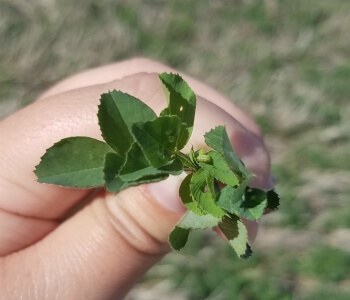April 2019 Key Discussion Topics
Apr 08, 2019

April 2019 Key Discussion Points
- Alfalfa Weevil – Now is the time to start scouting alfalfa in the area for active Alfalfa Weevil Larvae. We are starting to find low levels of them in some alfalfa fields. Alfalfa Weevil Adults lay eggs in the fall that then start to hatch and feed as the temperatures begin to warm up in the spring. Treatment timing and levels vary depending on the alfalfa stand, expected yield, and time that the feeding begins (how close you are to harvesting, etc). The Great Bend Co-op offers several program options that help the grower if control requires three insecticide applications. Talk to your Co-op representative to find out more.
- Dicamba Treatments Ahead of Dicamba-Tolerant Soybeans – When planning burndown application ahead of planting DT Soybeans, it is important to remember that the Label is the Law. Several dicamba products are NOT approved for application within 30 days of planting soybeans, including DT Soybeans. If you are planning on a burndown directly ahead of planting or even within those 30 days, be sure to use a Dicamba product that is properly labeled for use in or ahead of soybeans.
- Fertilizer Stabilizers – We are currently applying various types of fertilizer ahead of our spring-planted crops. Utilizing nutrient stabilizers are key to keeping this fertilizer available and in the root zone. Historically, we have seen some big rains between now and when the fertilizer is being utilized by the crop. In sandy soil especially, this can mean leaching down below the root zone if not stabilized. Another concern is the damp, dewy mornings with quickly warming temperatures. Volatilization becomes an issue under these conditions. We are now offering NH3 stabilizer products as well.
- Nitrogen to Sulfur Ratio – When analyzing your fertilizer needs this spring, for spring crops or wheat topdress, be sure to take note of your Nitrogen to Sulfur Ratio. Like staves in a barrel, even with majority of nutrients available at adequate or higher levels, you may still be limited on yield if one or two nutrients are lower than required. Sulfur is a secondary macronutrient, therefore has a higher potential to affect yield than most micronutrients. Sulfur used to be readily found in the atmosphere and sequestered by the plants naturally, but the Clean Air Act and changes in manufacturing have reduced the level of Sulfur in the air, therefore increasing the need to apply fertilizer at the field level. For Corn, the typical N:S Ratio is 10:1, meaning that for every 10 lbs of Nitrogen applied, you should be applying 1 lb of Sulfur.
- Upcoming Events –
- Great Bend Farm & Ranch Expo – Great Bend Airport and Events Center – April 10-12, 2019
- Great Bend Co-op Annual Meeting – April 10, 2019 – 6:30 PM
- NH3 Stabilizer Informational Meeting – Pawnee Rock Office – April 15, 2019 – RSVP Requested